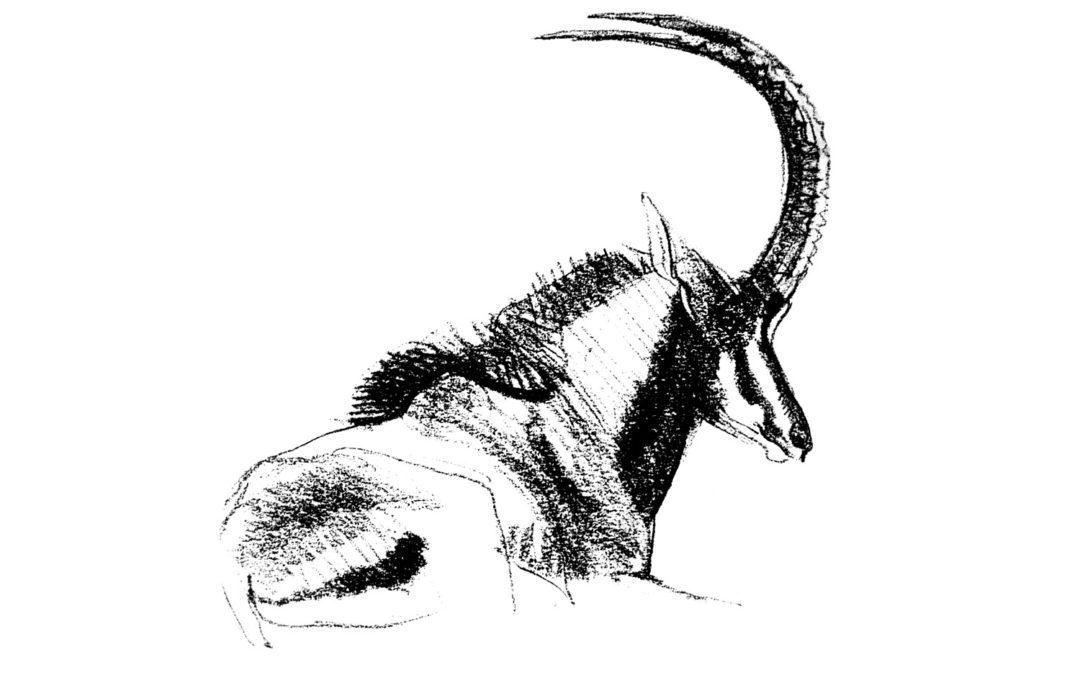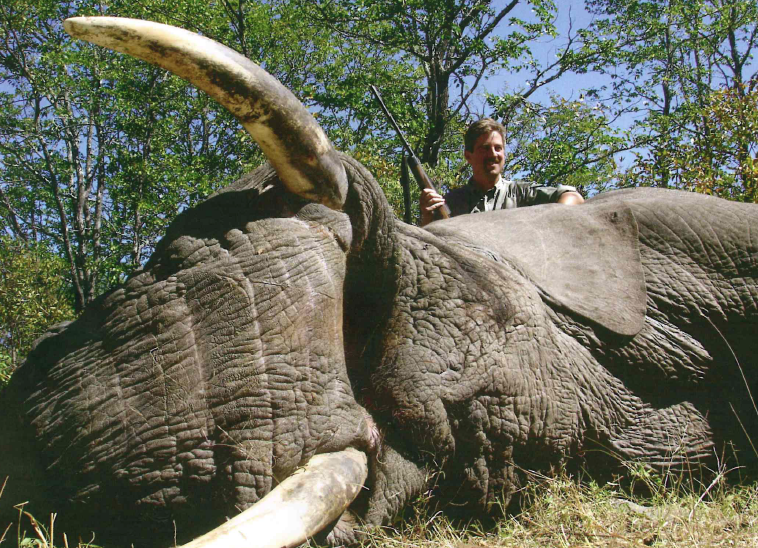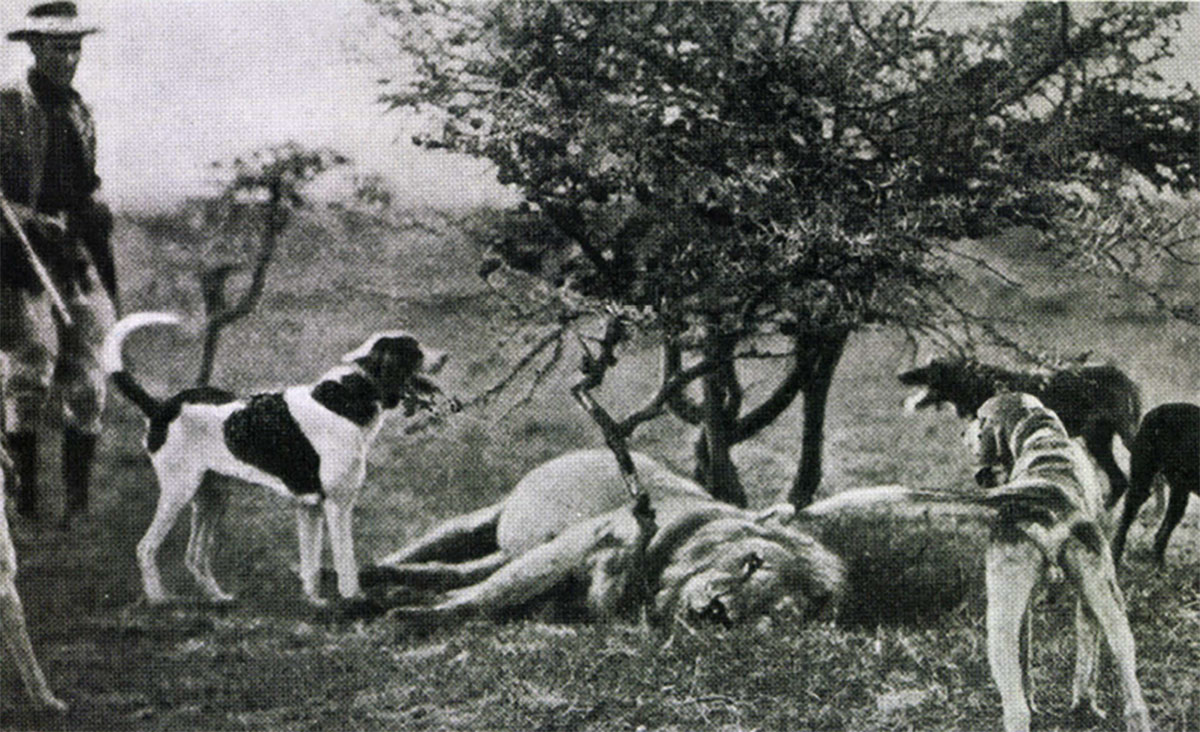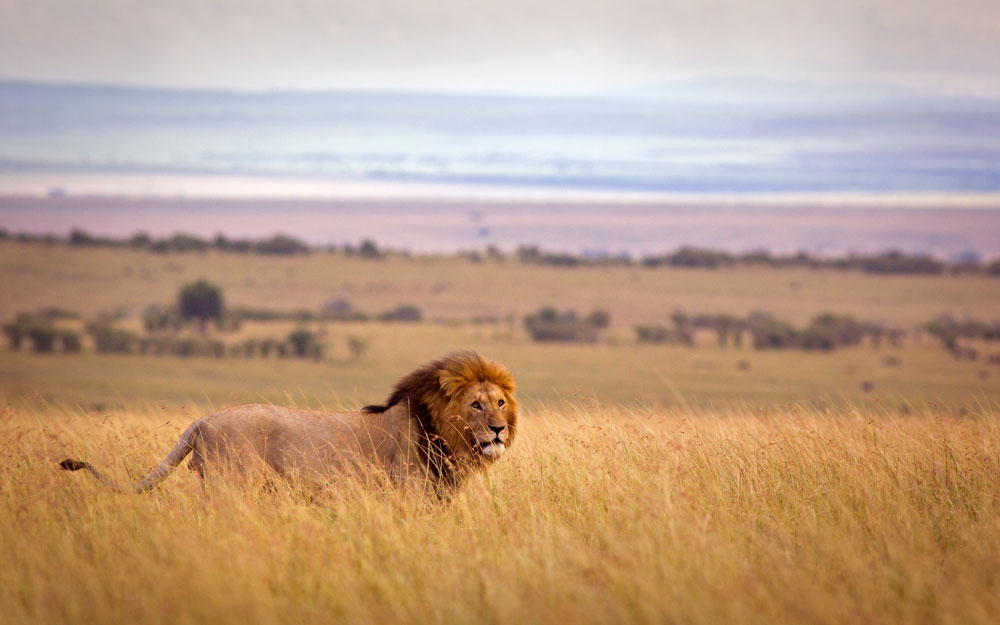A pair of lions had been terrorizing the skinners and, on the previous evening, the male had chased one of the natives up a tree.
For the American sportsmen, Africa is still a place of adventure, fraught with all sorts of perils and dangers, from malaria and poisonous snakes to animals that would just as soon crunch your bones as those of a gazelle.
On our first evening in camp we had been greeted by Patrick, game officer for the southeast sector of Kafue Park. Jabbering excitedly in a mixture of broken English and his native tongue, he explained that a pair of lions had been terrorizing the skinners and that, on the previous evening, the male had chased one of the natives up a tree.
Our compound, located about 50 yards from the skinning area, consisted of grass huts surrounded by a six-foot-high thatch wall. Problem was, the entrance to the compound did not have a gate.
Dead tired after our long drive from the capitol city of Lusaka, we quickly unpacked and climbed into bed, but not before I wedged the thatch door tightly into the entrance of our hut. I knew it wouldn’t stop a hungry lion, but anything trying to enter would make enough noise to wake me up. My gun stood loaded within arm’s reach. That night passed without incident.
It was on our third night that the lions made their move. Shortly after sunset the male walked brazenly past the terrified skinners and into the meat hut where he began chewing on one hindquarter of my waterbuck. Their shouts brought Zane, who drove the truck right up to the doorway of the shack, pinning the lion inside. Seeing no way out, the angry cat burst through the thatch wall as easily as a football player glides through a paper homecoming banner.
Zane picked us up and we loaded the half-eaten hindquarter onto the truck, then took it to a tree about a half-mile from camp. After hanging the meat just out of reach, Zane declared: “That ought to keep them occupied for awhile.” It did, for one night.
Two evenings later the lions returned just after sunset. The skinners threw sticks and rocks at the cats, who simply ignored the missiles while they dined on a zebra carcass. Once again we used the truck to scare them away and once again Zane declared our lion problems were over. Wrong again, and this time the aggressive lions didn’t wait as long.
Around 2 a.m. the male returned, walking boldly into the compound, past our sleeping huts, and into the kitchen area. There, acting more like a black bear in a northwoods fishing camp, he began ransacking cartons of eggs and other foodstuffs until his nocturnal prowling awakened the camp and he was frightened away, plunging through a thatch wall and into the surrounding darkness.
After reading The Man-eaters of Tsavo and other African classics, I had developed a healthy respect for the King of Beasts and found myself sleeping lightly. The lions’ antics, however, illicited different reactions from my companions. Zane, who has been hunting Africa’s dangerous game virtually all of his 55 years, almost seemed to enjoy their visits, referring to them as “big kitty-cats just looking for an easy meal.” Van Gilder, always the stoic, just smiled and mused: “If they’re gonna eat you, there’s probably not much you can do about it.”
 Read more of “Black Obsession,” plus 40 others by some of the greatest hunting authors, including Ruark, Hemingway and Capstick, can be found in Sporting Classics’ Africa.
Read more of “Black Obsession,” plus 40 others by some of the greatest hunting authors, including Ruark, Hemingway and Capstick, can be found in Sporting Classics’ Africa.
Add to, or begin, your collection of great hunting books today. Buy Now




